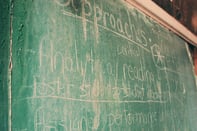Published on
Adult Education and ePortfolios

The electronic portfolios movement is sweeping across all levels of education around the world. Why? This technology, used as it should be used, enables the move from a teacher-centered to a learner-centered design; which is what we need today.
ePortfolios allow learners themselves to build evidence and context to show their accomplishments. Once learning is freed from constant teacher supervision, many opportunities open.
One opportunity is to learn by yourself. Some call learning by yourself “DIY” learning – do it yourself.
To stay employed today, everyone must keep learning and sometimes be a DIY learner. Now, in 2012, the pace of change in all life endeavors is so fast that to stop learning means to fall behind. Since jobs are no longer as permanent as they once were, employees must stay current to stay employed. Learning does not stop with the college degree; even the degree is no longer a guaranteed ticket to employment.
At some colleges and universities in the U. S., a new service has been added that is important to adult learners: Assessment of Prior Learning. This service, well-established in the U.K. and Australia, is becoming more and more common in the U.S. as well. When a student is out of college, or out of high school, but does important work during that time, that work can count toward academic credit. To get credit, it is vital to have an ePortfolio that shows evidence of your relevant learning.
According to CAEL’s Prior Learning Assessment (PLA) site;
CAEL recently conducted a study on PLA and adult student outcomes. The study examined data on 62,475 adult students at 48 colleges and universities across the country. CAEL found that graduation rates are two and a half times higher for students with PLA credit. PLA students also had higher persistence rates and a faster time to degree completion.
Mixing good work experience—learning in the real world—with academic learning seems to work very well. As you do your work in the real world, record your “Eureka!” moments, capture the context for that moment and others, organize your writing, photos, audio clips, or video clips, or whatever else you think marks your accomplishments. Put this material in your ePortfolio so that you have evidence to show when you re-enroll, or enroll for the first time, in a formal educational institution.
Learning is not limited to the classroom any longer; and to succeed today, you cannot limit the record of your learning only to classroom knowledge and grades. You can get your own ePortfolio even if you are not enrolled in high school or college. Start building your story! Adult learning is in!
Author Perspective: Association



